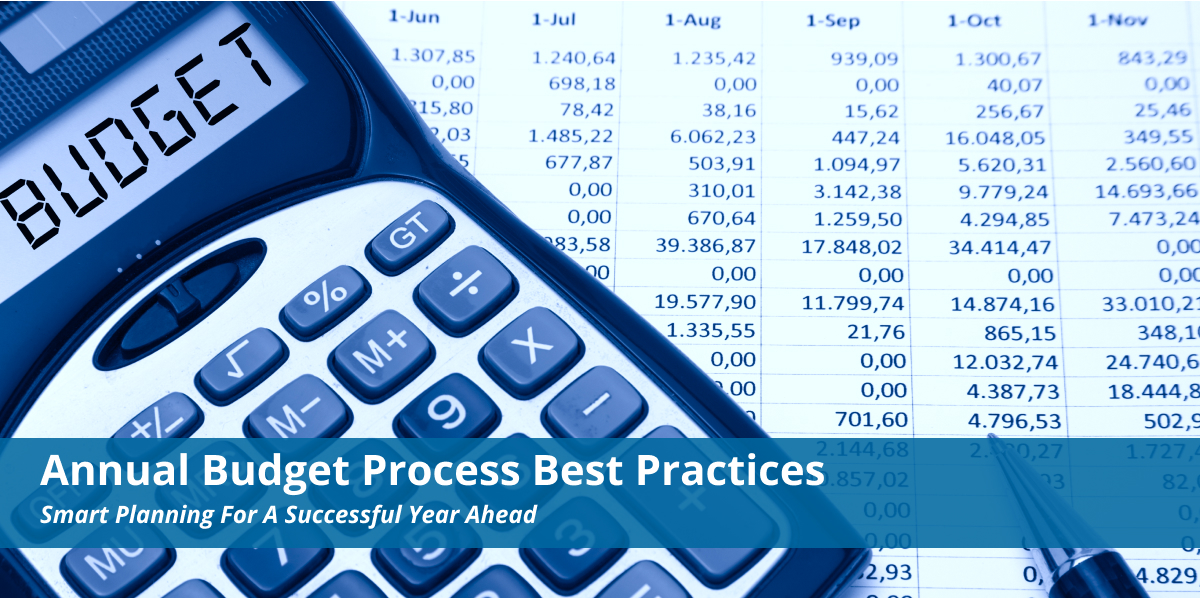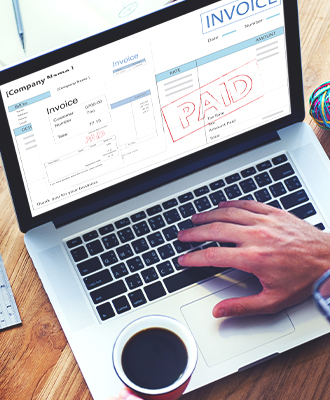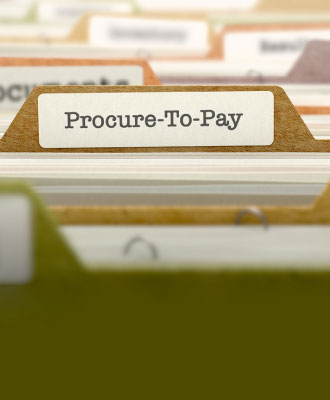No matter what industry you’re in, the forecasting and budgeting process is an essential but occasionally frustrating part of doing business. Without effective strategic planning, traditional budgets, and in fact the entire annual budget process, can be time-consuming and expensive to create—and worse still, inaccurate and opaque.
But your budgeting process doesn’t have to be an exercise in financial frustration. By incorporating a few essential best practices into your annual budget process, you can forecast and implement an annual budget that not only provides adequate and accurate resource allocation for your strategic goals across the budget cycle, but supports better overall business performance management.
The Case for a Well-Optimized Annual Budget Process
For many businesses, improving the budgeting process comes down to dollars and cents: completing budgets more quickly, with more accurate data and the flexibility to adapt to changing market conditions over the course of the fiscal year, means better cash flow and greater competitive strength when they’re needed most. More importantly, accurate and complete budgets also support iterative improvements to your company’s essential workflows, as well as better decision making in both financial planning and your organization as a whole.
But optimal forecasting and budgeting don’t happen on their own. Both your finance department and management across all business units will benefit immensely from strategic planning processes that help them overcome the most common budget planning challenges, including:
- Lack of strategic integration. When there’s limited collaboration and communication between strategic planning, financial planning, and individual department and project managers, it’s difficult to identify and accommodate the business drivers that should guide both the planning process and spend itself. Iterative improvement is difficult if not impossible, and fragmented strategic efforts may create unintended conflicts that actually reduce the ability of your company to realize its strategic goals.
- Delays, errors, and time-consuming workflows. Without a firm connection between strategic planning and financial planning, the budget cycle can be haphazard, slow, and hobbled by both human error and delays. The result? A budget process that takes around 25 days to complete for best-in-class organizations can stretch on for weeks or even months.
- Inconsistent methodologies and lack of transparency. Working in a fragmented data environment means different budgets being created and implemented using workflows and applications that don’t speak to one another. Data is often siloed and therefore invisible to those making higher-level strategic decisions. Some departments may keep elaborate spreadsheets in Microsoft Excel; others may use proprietary systems or ad hoc solutions cobbled together from a variety of different applications.
There’s no single system for collecting, managing, and analyzing financial data for insights that can be used to identify business drivers, anticipate and proactively compensate for market conditions, and leadership in business units, departments, and on specific projects may find themselves working at cross purposes instead of in shared support of the company’s strategic plan.
Meeting these challenges with a strategic plan begins with following a few simple best practices for data management, collaborative and communication-focused workflows, and implementation of digital tools and methodologies that ensure greater accuracy and transparency in the budgeting process as well as the integration of continuous improvement as a standard operating procedure.
“When different business units, departments, and even projects are all using different standards, practices, and tools to create budgets, the result is a mishmash of methodologies overflowing with opportunities for misunderstandings, data errors, and delays.”
Eight Annual Budget Process Best Practices
While the budgeting process can certainly feel like chaos at times—particularly if your organization has yet to develop a strategy for achieving digital transformation—you can “tame the tiger” and gain greater control over your annual budget process by implementing some best practices.
1. Review Existing Capabilities and Perform Needs Analysis
In order to improve your budgeting process, you need a baseline for comparison.
- Document current budget processes.
- Include all budgeting software and other applications used across business units.
- Identify inconsistencies in budget development, documentation, and implementation workflows.
- Record current time required to complete the budget cycle, and review historical budget cycle data (if available).
- Assess and document employee capabilities and responsibilities.
- Document current roles and responsibilities.
- Identify targeted areas for additional training, refresher training, and cross-training.
- Identify areas where lack of collaboration and communication create bottlenecks in the budgeting process or reduce spend visibility for all stakeholders.
2. Standardize with Help from the Right Budgeting Software Solution
As with so many other areas of business process management, it’s the human element that has the biggest potential for delays, inefficiencies, and errors in the budgeting process. When different business units, departments, and even projects are all using different standards, practices, and tools to create budgets, the result is a mishmash of methodologies overflowing with opportunities for misunderstandings, data errors, and delays.
You can eliminate this, ah, overabundance of operational diversity with two simple changes: standardizing your budget workflows and toolset, and centralizing your data collection, management, and analysis. Ideally, this centralization will use a cloud-based, mobile-friendly software solution.
Choosing a comprehensive budgeting and eProcurement solution like PurchaseControl gives you immediate access to powerful automation, artificial intelligence, and data analysis capabilities that support more efficient and effective financial planning in several ways:
- Centralized data collection and management means complete, role-appropriate spend transparency for all stakeholders.
- Connect disparate applications to create a fully integrated software environment.
- Intuitive budgeting tools let you:
- Create budgets by person, task, project, department, cost center, or a combination thereof.
- Set monthly, annual, or custom budget cycle times.
- Connect budgets to strategic planning and create approval workflows that ensure only approved spend hits each budget.
- Track and adjust your spend to compensate for unexpected market conditions, evolving business needs, or supply chain disruptions.
- Templates and automated workflows ensure consistent and compliant budget creation and management.
- Real-time budget reporting helps you keep an eye on cash flow, track performance and compliance KPIs, and monitor continuous improvement across budget iterations.
- Advanced analytics provide actionable insights you can use for target setting to test budget assumptions, pursue new opportunities and refine your operational efficiency.
3. Prioritize Business Drivers
Modern digital budgeting tools make it possible to break free from the confines of budgeting for line items and focusing your strategic goals to match business drivers (i.e., those factors most important to your company’s financial success, competitive strength, and growth).
Data analysis helps you identify these business drivers more quickly and accurately, and then run models to explore the impact of changes to the budgeting process on actual results.
Shifting your focus to business drivers can greatly increase the speed with which your team creates budget iterations, and allow for faster optimization to capture value and savings much sooner than with traditional budget techniques.
4. Define and Develop a New Budget Process
Armed with a robust budget software solution, it’s time to document your new budget processes and get your team on board. Automate as many processes as you can (including approvals and contingencies for dealing with unexpected budget variance), and focus on the four C’s— comprehensive data management, clarity, communication, and collaboration—when building your templates and workflows.
Budget analysts rely on budget variance and other metrics to measure performance and compliance issues, so decide early on what level of detail is required for each role and budget, and look for opportunities to balance efficiency with strategic value.
Training and education will also be essential, since you’ll need full compliance and buy-in from all stakeholders to realize the benefits of the changes. Unless everyone—the C-suite, management, staff—is on the same page, even the most advanced budgeting tools won’t help you reach your strategic goals.
Consequently, be sure to invest in a solution that provides this training and education, and take the time necessary to engage your team so they have a clear understanding of not just how the new budgeting process works, but why it’s so important to follow it—well before you pull the trigger with implementation.
5. Identify Key Performance Indicators (KPIs)
Another set of tools you’ll need to have in place before you can implement your new budget process is your KPIs. These metrics help you monitor your budgeting and reporting processes for efficiency and efficacy. They also provide early insights into potentially costly problems so you can make strategic changes before small issues become major disasters.
Some of the KPIs you might choose to monitor in your budgeting processes include revenue growth, debt reduction, cost variance, actual cost, and return on investment (ROI), among others.
Unsure which KPIs to track? Useful and effective KPIs:
- Are measurable and essential to your company’s short-term and long-term success.
- Are connected to your company’s strategic goals.
- Are well-defined, have a clear method of measurability, and a clear target.
6. Implement Your New Annual Budgeting Process
Rolling out your new budgeting process will be easier when your team has been well prepared for the change. Be prepared to provide additional training, cross training, and educational refreshers as needed to ensure everyone is engaged with the new budgeting system and complying with its controls.
7. Track Performance and Accountability Over Time
In the past, annual budgets were often treated as a “set it and forget it” affair. Of course, the modern, always-on, digital economy doesn’t really allow for that level of inattention. Accurate planning, generating rolling forecasts, and modeling potential cost scenarios all require consistent performance monitoring and management.
Using your existing data, the tools provided by your budgeting software solution, and your KPIs of choice, you can not only track and evaluate spend performance, but make strategic adjustments as necessary throughout the fiscal year. You can also explore potential outcomes, develop budgets for new initiatives based on historical data for similar projects or departments, and ensure accountability by tracking compliance and performance at multiple levels.
8. Refine Your Processes through Continuous Improvement
As the old saw says, “there’s always room for improvement.” Continuous improvement may provide increasingly attenuated positive changes over time, but monitoring and refining your budgeting process creates a ripple effect throughout your entire business.
More efficient workflows mean faster budget iterations that aid in more strategic decision making without sacrificing clarity or accuracy. Better decisions lead to stronger performance, better cash flow, and higher profits; those profits can, in turn, be invested in growth, innovation, and further operational improvements that support your company’s overall goals.
Ultimately, by optimizing your forecasting process and budgeting workflows, you’re not just capturing savings but creating value by supporting organization-wide business process optimization and helping to protect business continuity.
Better Business Performance Begins with Better Budgeting
When your budgeting process and your business strategy work hand-in-glove together, beautiful things can happen. Implement best practices for your annual budget process to improve your business performance, enhance your strategic decision making process, and give your company a stronger competitive edge through optimal financial management and planning.
Spend More Strategically and Make More Informed Decisions with Budgeting Tools from PurchaseControl
Find Out How








